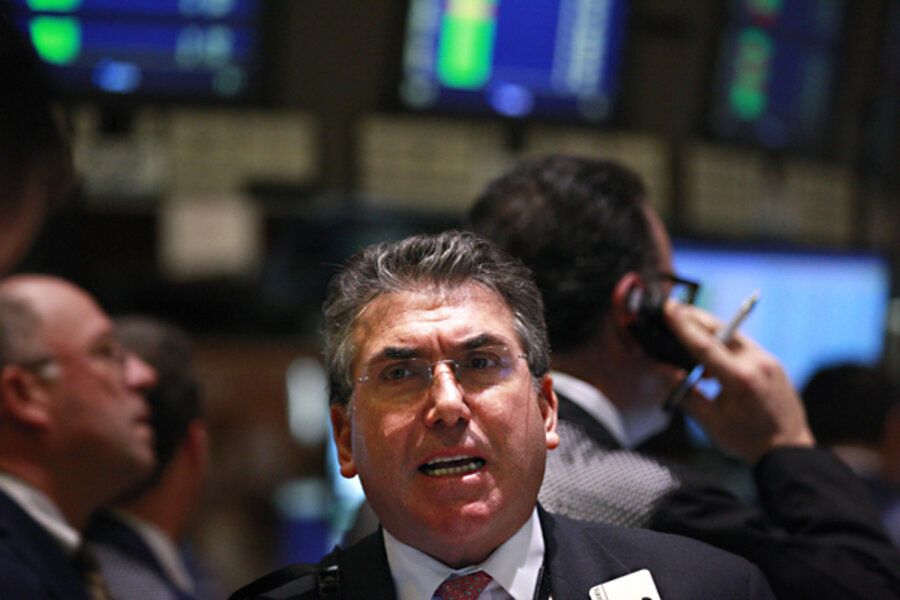Stocks mostly lower; Dow up 16
Loading...
Stocks ended pretty much where they started Wednesday on Wall Street, a day after the market had its biggest gain of the year.
The Dow Jones industrial average eked out an increase of 16.42 points, its sixth consecutive gain. The Dow ended at 13,194.10, up 0.1 percent. The Dow was up as much as 43 points in the morning, but most of those gains evaporated by mid-afternoon.
It was the longest winning stretch for the Dow since February 2011, but that was one of the few bright spots on an otherwise glum day in the stock market.
The Standard & Poor's 500 edged down 1.67 points to 1,394.28. The Nasdaq composite inched up 0.85 point to end at 3,040.73. The Nasdaq closed above 3,000 on Tuesday for the first time since December 2000.
Other market indicators were weak. The Russell 2000 index of small-company stocks fell 1 percent. Only two of the 10 industry groups in the S&P 500 rose, technology and banks. Falling stocks outnumbered rising ones more than 2-to-1 on the New York Stock Exchange.
American Express led the Dow higher with a 3.5 percent advance. The credit card company said it would increase its dividend and buy back up to $5 billion of its own stock after passing the Federal Reserve's latest "stress test."
Citigroup fell 3.4 percent after regulators ruled that the bank couldn't afford to raise its dividend. Citi was one of just four major financial companies that didn't pass the Fed's latest test of how banks would hold up during an extreme economic downturn.
On Tuesday, a powerful rally in bank stocks pushed the Dow to its highest close since the last day of 2007. The Federal Reserve said 15 of the 19 major banks it surveyed passed its test.
Other banks that got passing grades from the Fed mostly rose. Regions Financial rose 6.9 percent to $6.17 after the bank said it would sell $900 million in stock to repay some of the money it received as part of the 2008 bank bailout. Bank of America rose 4.1 percent to $8.84 and Zions Bancorporation jumped 10.5 percent to $21.58, the most of any stock in the S&P 500 index.
MetLife, an insurance company, also failed to pass the Fed's stress test. The stock slid 5.8 percent to $37.16, the most in the S&P 500.
The yield on the 10-year Treasury note rose sharply, to 2.27 percent from 2.11 percent late Wednesday. The benchmark yield has risen for five days straight and is at the highest level since October. That's a sign that investors believe the economy is improving and that they're more willing to hold higher-risk assets like stocks.
Gold plunged $51 to $1,643 an ounce as the dollar surged against other currencies. Gold often falls when the dollar rises because it's seen as an alternative to holding cash.
European markets were mostly higher. Germany's DAX rose 1.2 percent. France's benchmark index rose 0.4 percent and Spain's edged up 0.2 percent.
The Fed was planning to wait until Thursday to release the results of its stress tests, which determine which financial companies are healthy enough to raise their dividends. After JPMorgan Chase surprised the market with an announcement Tuesday that it would raise its dividend and buy back stock, the Fed released the results early.
Apple rose for a sixth straight day, gaining $21.48, or 3.8 percent, to $589.58. The stock started the year at $405. The company announced the latest version of its blockbuster tablet computer, the iPad, last week.
Southwest Airlines fell 2.7 percent to $8.18 a day after the low-cost carrier said it didn't expect to earn a profit in the first quarter because of higher fuel costs. The airline also said ticket bookings for spring travel weakened in late February.
Cliffs Natural Resources jumped 7 percent to $69.50. The Cleveland-based mining company said late Tuesday it was bumping its dividend to 62.6 cents, from 28 cents.







